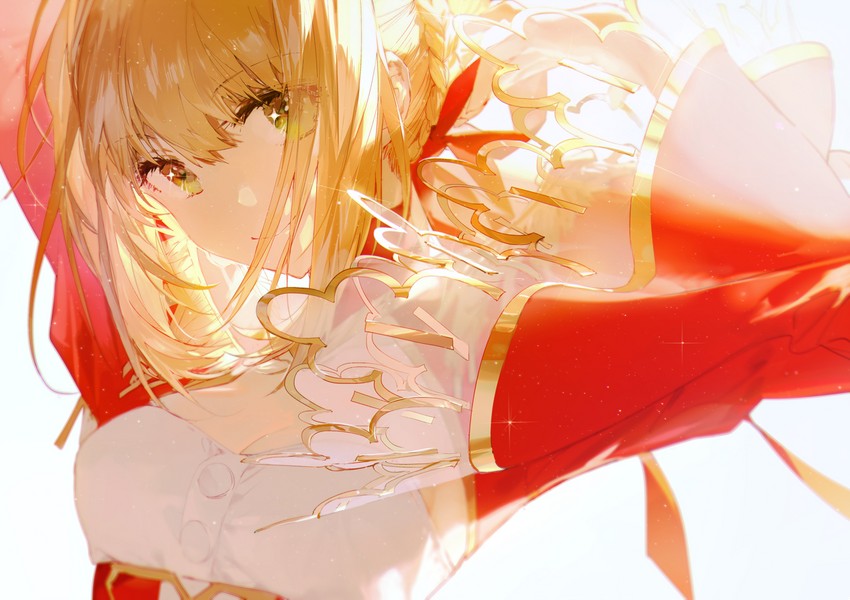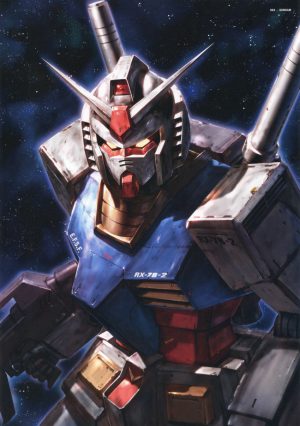Otaku: Japan's Database Animals
Over the past year, I’ve read through a lot of academic analyses of anime and anime fandom, some on my own out of curiosity and others for academic purposes (yes, really). The overall state of academia in the anime studies field is pretty similar to what you’d find elsewhere, that is, abysmal and embarrassing. I’d say that Bl. John Henry Newman wouldn’t be impressed, but then, neither would anyone who isn’t fully embedded in the university system. Most readers probably don’t need a lot of examples, but I’ll provide a couple selections anyway just because they’re so bad they’re actually pretty funny. This is from Steven Brown, in Tokyo Cyberpunk, discussing Ghost in the Shell.
One might wonder whether such transnational hybridity and geographic indeterminacy reinforces rather than resists the dreams of the techno-orientalists by offering an illusion of Asia or Japan, such as is critiqued by Ueno Toshiya in his influential essay “Japanimation and Techno-Orientalism.” According to Ueno, Japanese animation functions “as a cultural and ideological apparatus to cover and disavow the reality of global capitalism,” which he sees as inextricably linked to the exploitation of labor forces in Asia in a post-Fordist economy. In response, [GITS director] Oshii has suggested that he is not interested in representing real nations such as Japan so much as he is in exploring the liminality of borderlines.
Here’s Samantha Close, from an article called “Fannish Masculinities in Transition in Anime Music Video Fandom.”
Politically engaged scholarship often interrogates the experiences of groups without privilege. But in order for social change to happen, privileged identities must also be reworked. An analysis of anime fandom in the early 2000s shows that fan works, such as fan video and cosplay performances, concretize masculinities that are both transgressive and desperately seeking normative confirmation. By means of queer and masculinity theory, I argue that fandom is a uniquely generative space for reworking masculinity. This will only remain true, however, if it can hold onto its subversive practices in a time of increasing mainstream attention.
Fortunately, the field isn’t a total loss. Robot Ghosts and Wired Dreams, edited by Christopher Bolton, Istvan Csicsery-Ronay Jr., and Takayuki Tatsumi, isn’t bad. It’s a collection of essays by various authors and so the quality certainly varies from one piece to the next, but some of the entries are legitimately interesting, about anime but also Japanese science fiction generally since the book also includes SF works in film and literature. If you have any interest in Japanese SF, I can give it a genuine recommendation, especially if you can get it used or at a library. The Anime Machine, by Thomas Lamarre, also has some good material for those interested in animation as animation, and Anime: A History, by Jonathan Clements, is often recommended and looks promising, though I haven’t had a chance to read it myself.
Another legitimately good book, and the one I want to focus on today, is Otaku: Japan’s Database Animals, by Azuma Hiroki, originally published in 2001 and translated for the English edition in 2009. Now, I should say at the outset that it’s not all roses; he spends much of the book talking about postmodernism, which to be honest I had a hard time following, partly because I know little about postmodernism and partly because I just don’t care all that much. The middle portion of the book, though, where he discusses how otaku consume media and how that’s changed over time, was more engaging. Though otaku culture has certainly changed since 2001 and is different here in the United States than in Japan, much of what he has to say is still relevant in both countries.
For example, he says that early generations of otaku, fans of, say, Mobile Suit Gundam, were primarily interested in narrative consumption. This means not just the story and characters of a show, but the entire world, the setting, backstory, specs of the spacecraft and mechas, and so on. He contrasts this with a younger generation of otaku who are more interested in what he calls database consumption. He explains the distinction:
[N]umerous fans of Gundam desired the completion and close examination of a singular Gundam world. That is to say, in their case they preserved the current passion for a fictitious grand narrative. However, even during the peak of the craze, the fans of Evangelion who appeared in the mid-1990s - especially those of the younger generation […] - did not really have a concern for the entire world of Evangelion. Instead they focused exclusively on the settings and character designs as objects for excessive interpretation or “reading up” (exemplified in derivative works), and for chara-moe.
For them, a grand narrative or fiction with a Gundam-style world was no longer desirable […]. [M]any Evangelion fans required settings to empathize with the story’s protagonist, to draw erotic illustrations of the heroine, and to build enormous robot figures, and showed obsessive interest in data to that extent, but beyond that they seldom immersed themselves into the world of the works.
I can see the objections coming already, so let’s deal with them briefly. There are many Evangelion fans who are interested in the world and narrative of Eva like Gundam fans are with their favourite franchise. Azuma’s characterisation of Eva fans may also seem overly negative, and though I’d have toned it down a bit, keep in mind that Azuma himself is an anime fan and that he’s focusing not on casual anime fans or those with just one foot in the fandom, but otaku who are fully immersed in the culture. The main thrust of his argument, though, I think is correct. Eva may not be the clearest example because it was at a turning point in otaku culture, but I can say that his observations are largely true based on my own experience since getting into anime around 2004.
Azuma claims that current “database consumption” is characterised by otaku focus on characters and searching for moé-elements. He uses the example of Di Gi Charat, which is especially clear since it’s so self-conscious, packing in as many moé tropes as it possibly can in part as something of a joke (it even pokes fun at its own audience through unflattering, though not mean, depictions of otaku), and partly to market itself to otaku. These moé elements, for those not familiar with the concept, include many different traits, from physical appearance to personality types, and though the specific tropes fashionable at any moment changes over time the basic idea is largely the same now as it was in 2001.
As a currently popular example, consider the Fate franchise. The original Fate/Stay Night visual novel did have a large, engaging story to tell, as do some of its spin-offs like the prequel Fate/Zero. As with Eva, there certainly are fans who enjoy analysing and discussing the overarching narrative, but if one looks at the majority of discussion around the work and more recent franchise entries, like the game Fate/Grand Order, one immediately finds just the sort of character-focused database consumption Azuma describes. The basic premise of the franchise, a battle royale between mages and legendary and historical figures, has a great deal of narrative potential, but usually there’s not even an attempt at taking advantage of this. Historical accuracy is almost always thrown out the window and these figures are instead designed to appeal to currently popular otaku tropes and fetishes. Not that this wasn’t true of the original work, of course, with King Arthur’s design being the most famous example. However, whereas I enjoyed FSN and FZ, as someone with little interest in these tropes FGO gives me basically nothing, and I grew bored with it after a few hours of play.

Nero, bro, what did they do to ya?
I’ll refrain from multiplying examples; those involved with otaku culture can undoubtedly think of more examples on their own and those who aren’t probably get the point. Azuma goes into significantly more depth, but his description is purely that, descriptive. So let’s ask the question, is this type of media consumption bad? To make this more interesting, we’ll set aside the most obsessive fans, since I doubt anyone will argue that obsession is healthy. We’ll also set aside the most casual fans who don’t spend a lot of time with otaku culture anyway. What about people for whom otaku-oriented media is their primary hobby, even if they do have a life outside of that hobby?
In some ways it’s rather innocuous. There’s nothing actively harmful in spending one’s spare time playing games then drawing or viewing fanart. It’s not the best use of one’s time either, of course, but it’s not like everyone will or even can be an amateur Classicist. As much as I prize literary classics, I agree with Ezra Pound’s assessment that if you don’t enjoy them at some level you’re unlikely to get much from them, anyway. Some hobbies are better than others, but as long as you have a basic knowledge of a handful of particularly important works and authors like Homer and Shakespeare, I’m not going to cast stones at what someone does with his time.
Another question, though, is whether database consumption is in some way inferior to narrative consumption. I would like to answer “yes,” since narrative consumption is closer to the type of literary analysis that allows one to learn the most from what one reads and watches. Keep in mind, though, that for many fans “narrative consumption” doesn’t have a lot of this type of analysis, either, but includes a focus on details irrelevant to a story’s thematic development. Think of Star Wars fans, for instance, who are a good Western analogue for this. Reading about and speculating on the nature of the spacecraft, alien races, and backstory details may be a fun way to kill some time and bond with like-minded people, but isn’t exactly turning them into gentlemen, either. Again, I won’t cast stones at these people as long as they have a life outside their hobby, but when people like Confucius and Ben Jonson encourage us to study the arts, this isn’t exactly what they had in mind and for good reason.
Essentially, then, I’ll say that for popular culture, produced primarily for entertainment, it’s essentially a toss-up. A discussion of different ways of reading and otherwise interacting with media may an interesting topic for another time, though.
In any case, Azuma’s book is worth reading, but for a fairly small number of people. If you’re interested in otaku culture and have the patience for a postmodern framing, though fortunately one that does remain mostly grounded, by all means pick it up - it’s easily available and fairly short. Otherwise, though, you’re just as well off watching a cartoon.
